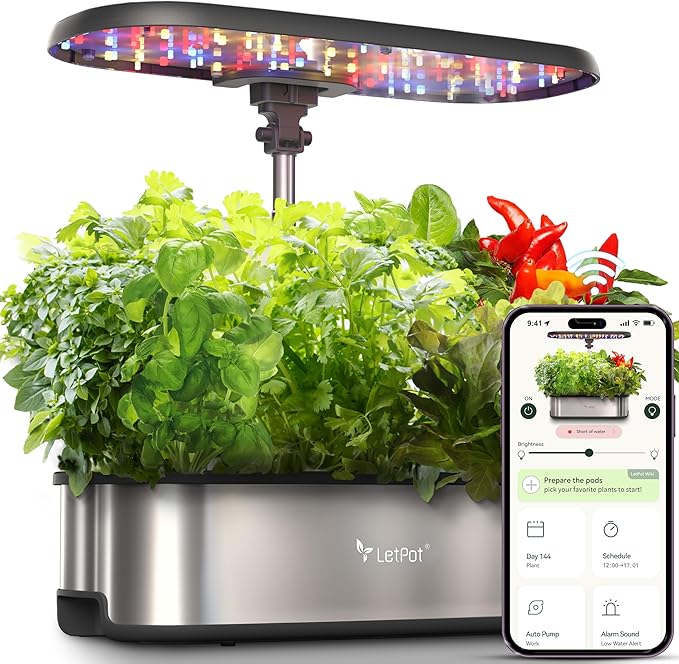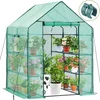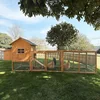What Perennials to Plant by Zone
Perennials are a cornerstone of any well-designed garden, offering a reliable and enduring presence year after year. Unlike annuals, which complete their life cycle in a single season, perennials return each spring, providing a stable foundation for your garden's aesthetic and ecological balance.
Search Plants by Zip Code
One of the key advantages of perennials is their longevity. These plants can live for several years, with some species thriving for decades. This makes them a cost-effective choice for gardeners, as they do not need to be replanted annually. Additionally, perennials often require less maintenance once established, making them ideal for both novice and experienced gardeners.
Perennials come in a wide variety of forms, including herbaceous plants, shrubs, and trees. Herbaceous perennials die back to the ground each winter and regrow from their root systems in the spring. Shrubs and trees, on the other hand, maintain their woody structure year-round, adding vertical interest and structure to the garden.
When planning a perennial garden, it's important to consider the specific needs of each plant. Factors such as sunlight, soil type, and water requirements can vary widely among different species. Grouping plants with similar needs together can help ensure that each one thrives in its environment.
Perennials can be used in a variety of garden settings, from formal borders to naturalistic meadows. They are particularly well-suited to mixed plantings, where their diverse forms and textures can create a dynamic and visually appealing landscape. Many perennials also attract pollinators, such as bees and butterflies, which are essential for a healthy garden ecosystem.
One of the challenges of growing perennials is managing their growth over time. Some species can become invasive if not properly controlled, spreading aggressively and crowding out other plants. Regular maintenance, such as dividing and thinning, can help keep these plants in check and ensure a balanced garden composition.
Perennials can also be propagated in a variety of ways, including division, cuttings, and seed. Division is a common method for herbaceous perennials, involving the separation of a plant's root system into multiple sections, each of which can be replanted. Cuttings and seed propagation are often used for shrubs and trees, allowing gardeners to produce new plants from existing specimens.
In addition to their ornamental value, many perennials have practical uses as well. Some species are edible, providing fresh herbs, fruits, and vegetables throughout the growing season. Others have medicinal properties, offering natural remedies for a variety of ailments. Perennials can also be used for erosion control, as their deep root systems help stabilize soil and prevent runoff.
When selecting perennials for your garden, it's important to consider their seasonal interest. Many perennials offer multiple seasons of beauty, with attractive foliage, flowers, and seed heads that provide visual interest throughout the year. By choosing a mix of early, mid, and late-season bloomers, you can ensure a continuous display of color and texture in your garden.
Perennials can also be combined with annuals and biennials to create a diverse and dynamic planting scheme. Annuals provide a burst of color and fill in gaps between perennial plants, while biennials offer a two-year life cycle that adds variety to the garden. Together, these plants can create a rich and varied landscape that evolves over time.
Proper care and maintenance are essential for the long-term success of a perennial garden. Regular watering, fertilizing, and mulching can help keep plants healthy and vigorous. Pruning and deadheading spent flowers can encourage new growth and extend the blooming period. Additionally, monitoring for pests and diseases can help prevent problems before they become serious.
Whether you're looking to create a low-maintenance garden, attract pollinators, or simply enjoy the beauty of long-lasting plants, perennials offer a wealth of options. Explore our selection of recommended perennial plants below, or use our search tool to find the best options for your region's climate and growing conditions.
Perennials are a diverse group of plants that offer a wide range of colors, forms, and textures. From the delicate blooms of columbine to the bold foliage of hostas, there is a perennial to suit every garden style and preference. By carefully selecting and combining different species, you can create a garden that is both beautiful and functional.
One of the joys of growing perennials is watching them evolve over time. As these plants mature, they often develop more robust root systems and larger, more abundant blooms. This gradual transformation can add a sense of continuity and stability to your garden, creating a living tapestry that changes with the seasons.
Perennials can also play a key role in sustainable gardening practices. By choosing native species and those well-adapted to your local climate, you can reduce the need for water, fertilizers, and pesticides. This not only benefits the environment but also creates a healthier and more resilient garden.
Best Perennials for Every State
Incorporating perennials into your garden design can also provide habitat for wildlife. Many perennials offer food and shelter for birds, insects, and other creatures, supporting biodiversity and enhancing the ecological value of your garden











